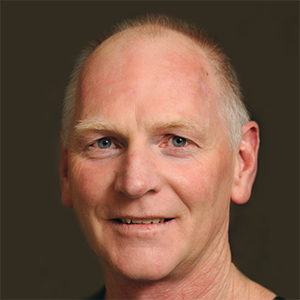Steeped in the smell of menthol rub, change rooms are buzzing with activity.
Lead players for each section of the ground are being given instructions – reminders of the game plan and a gee-up about tactics, skills, keeping up the talk and contesting the ball.
Team fitness staff are handing out water and energy drinks for players to get in one or two final swigs before running on. Some of the team are stretching quads and hamstrings while strappers wend through the group checking knee, ankle, wrist and thumb strapping on those with minor niggles.
The coach and the statisticians are ready to move up to the coach’s box to survey the game, in real life and on screens set to take in the play from every angle.
Upstairs, corks and caps are off on bottles of wine and beer and the first of the hot snacks are being served to guests in corporate boxes around the ground.
Staff organising the club president’s lunch are stressing over menus and the table settings – sponsors are in town, it must be immaculate.
In the stadium, the noise rises as the fans – beanie and scarf-clad everyday faces – are revved up for the game, keen for their team to get the first clearance out of the centre.
A few drinks down and they are ready to shout themselves hoarse to support their colours, as if their voices alone will carry the ball to the goals.
It’s big, buoyant … even electric. This is Australian football, and this is game day.
But behind every aspect of the game, every tiny detail, there is planning, expertise and people, a veritable army of professionals, dedicated to making it all a success.
 With more than 20 years’ experience of the AFL, UniSA exercise scientist and internationally published sports researcher, Professor Kevin Norton, says the drive to improve and innovate in the football business is intense.
With more than 20 years’ experience of the AFL, UniSA exercise scientist and internationally published sports researcher, Professor Kevin Norton, says the drive to improve and innovate in the football business is intense.
“We’ve all heard coaches talk about the ‘one-percenters’ that make a difference during play, but in modern, professional football that applies to everything the club does,” Prof Norton says.
“There’s an enormous commitment to innovation, to any new research that might benefit the team, in everything from game tactics and athlete fitness, right through to how the club is run.
“The drive is to become better, fitter, smarter – anything that contributes to a winning recipe.”
Prof Norton’s research has looked at everything from how rule changes that speed up or slow down the game affect injury rates, right through to refining a definition of ‘game style’ and developing measurements and predictors for team effectiveness.
He says every piece of research that comes to the attention of a club is pored over to see if it has value.
“Today professional clubs of all codes, from English Premier League soccer to the National Football League in the US, are awash with data,” Prof Norton says.
“Modern tracking equipment can measure 100 samples a second in any single move-ment or look at 40 variables in a single kick, which is all a bit mind-blowing and exciting on the surface.
"The real challenge for sports scientists and for sporting clubs is extracting seriously meaningful information from the data. Right now, probably only about five per cent of the information collected is used.”
Driven by the imperative for improvement, Prof Norton says most sports have embraced sophisticated new technologies that can provide more and more information about player performance and recovery, and all aspects of play.
He believes this is one area where big data analysis and artificial intelligence could be used to unlock the real potential of this information and make what is a deluge of datasets, really useful.
“The thing about top level professional sports is that the margins for improvement are exceedingly fine but the incentive to improve is huge – whether it’s the AFL Premiership, the World Cup, or the Superbowl – winning is the Holy Grail,” he says.
But as Head of Football at the Adelaide Crows, Brett Burton, says, being a successful sporting club is not just about bringing 45 players together to win a premiership.
“Our club’s vision statement is ‘bringing people together to achieve great things’ and that is about more than playing
a great brand of footy across the season,” Burton says.
“The challenges in running a football club are many and varied both on and off the field.
“We take a holistic approach to the wellbeing and performance of our players which incorporates game strategy, skill development, high performance, personal development, leadership and culture, and mind performance.”
That leadership and culture are high on the agenda at the Adelaide Crows, is a great indicator of the club’s achievements.
They put great store in the importance of a strong, positive organisational culture, and research from UniSA would suggest they are right to do so.
 Senior Lecturer in UniSA’s School of Management and Director of its CERM PI program (Centre for Environmental and Recreation Management performance indicators), Dr Ian O’Boyle, says new research is showing that club culture and the successful operation of a club’s board has a direct correlation to team success on the field.
Senior Lecturer in UniSA’s School of Management and Director of its CERM PI program (Centre for Environmental and Recreation Management performance indicators), Dr Ian O’Boyle, says new research is showing that club culture and the successful operation of a club’s board has a direct correlation to team success on the field.
His research team evaluated the culture at 10 of the 18 AFL clubs, specifically examining the role of club boards in fostering a culture that either promotes or inhibits on and off-field success.
“We have gone back 15 years and it has been really clear to see that clubs with a good culture perform better, not only in their business outcomes but also in the finals and the number of premierships they win,” Dr O’Boyle says.
“If you see a sporting club in the spotlight for all the wrong reasons – more often than not, underlying that will be a failure of organisational culture.”
Dr O’Boyle says clubs should be just as focused on ensuring their chairperson and CEO are great corporate performers and strong collaborators, as they are about getting the best draft picks because the influence, for good or ill, from the senior management of a club is pervasive.
Burton agrees that club culture is vital for sustained success both on and off the field.
“The competition is fierce, and as the AFL works towards an equalised environment which has seen the League become more even each year, you must have a clear strategic focus and use resources wisely,” Burton says.
“We want both our male and female players to be independent and confident to perform to their best ability and that means providing a trusted environment based on elite habits and best practice.
“Our aim is to enhance the performance and success of our athletes across all aspects of their lives, for their immediate and future success.
“But we never forget that the fans and members are the backbone of our club and we look to engage with them in as many different ways as possible, whether that be through our digital platform, school and hospital visits, junior footy clinics, regular member forums or in many other ways.”
Burton says the club is very aware that beyond the AFL, they are competing for attention in a global sports and entertainment landscape.
“Generally speaking the sports and entertainment landscape is becoming increasingly competitive, so we need to diversify and find new ways to generate revenue,” he says.
“With this in mind, we’ve acquired eSports and baseball teams to expand our reach globally and appeal to new audiences.”
Importantly, he says, whether it is a new venture or the game that is at the heart of the club, the whole business is run with the same vital commitment to excellence.